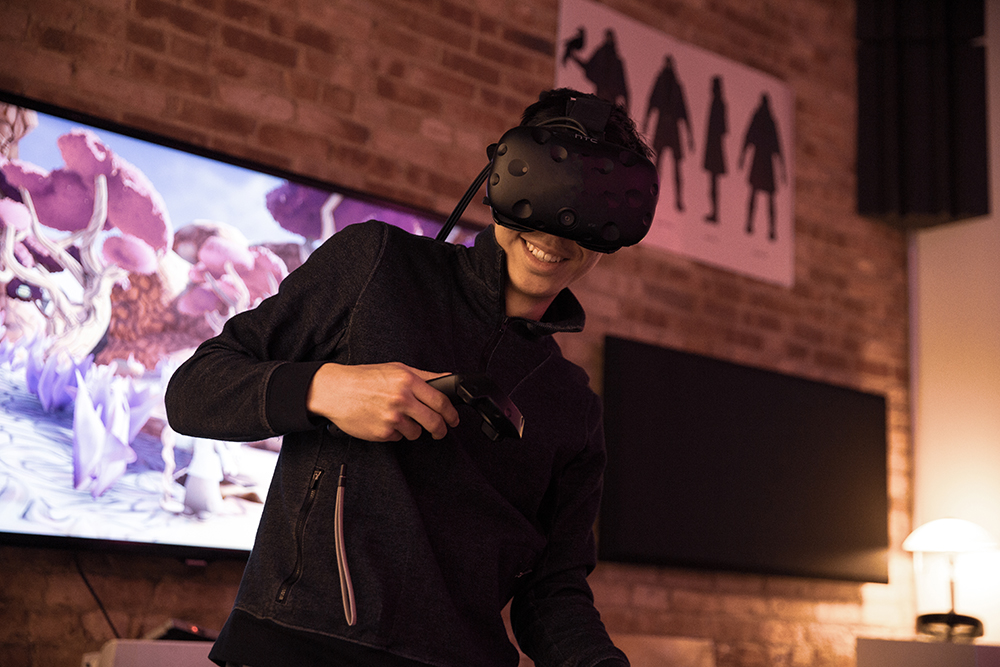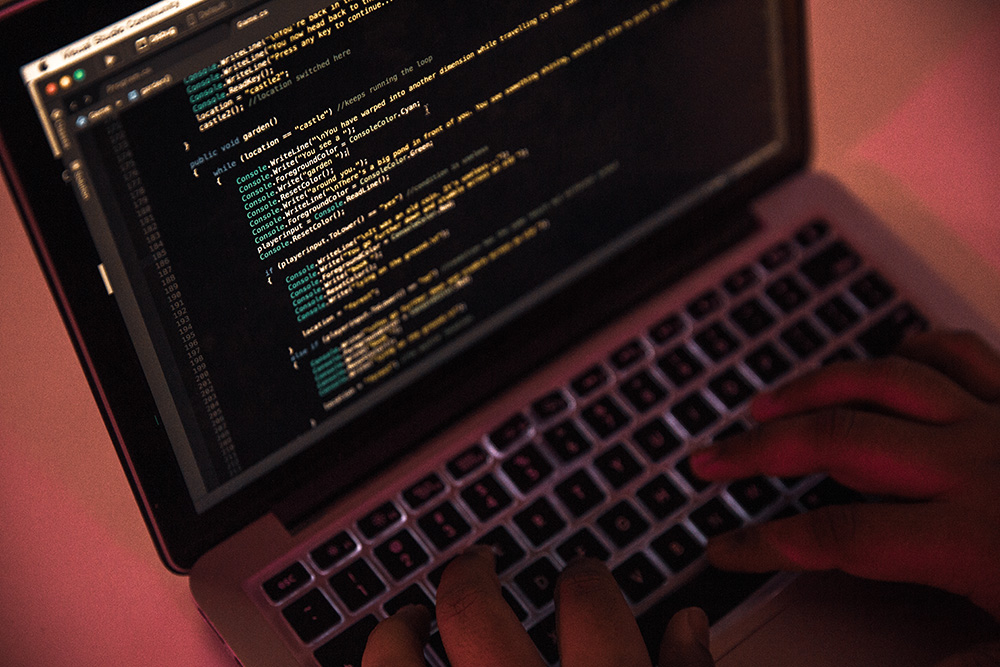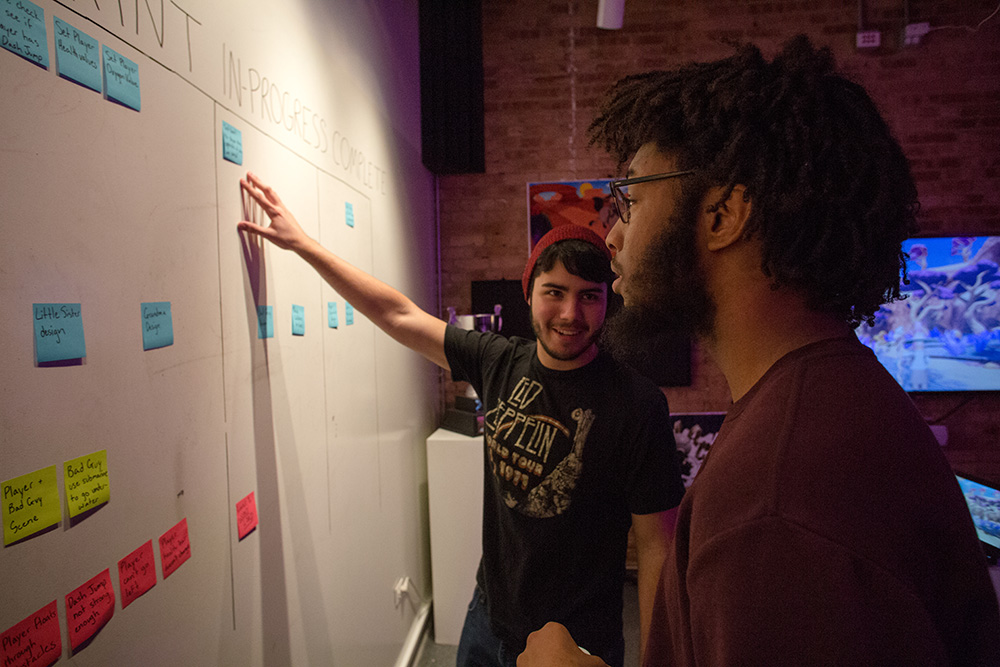User Experience and Interaction Design (MA)
Applications are no longer being accepted for this program.
Time to degree: three semesters (31 credits)
Create meaningful digital interactive experiences in the User Experience and Interaction Design master's degree program at Columbia College Chicago. This one-year program will challenge you both creatively and technically, while combining the soft and hard skills demanded by the interactive media industry. From leadership and project management to development and programming, you'll learn how to design and implement interactive products.
User Experience and Interaction Design is a one-year MA program that can also be completed on a part-time basis in two years. We’re interaction designers that teach empathy-driven design, so we designed our program so that working adults need only attend class weeknight evenings.
Leadership, Interaction Design Theories and Practices and Software Development
You need more than a good portfolio to succeed in this field—companies want technical experts but are always in need of employees who can be flexible problem solvers when it comes to building the user experience. In recognition of that multi-faceted skill set, our User Experience and Interaction Design MA focuses on three areas: leadership, interaction design theories and practices, and software development. Move out of production roles and into managerial positions with a degree that will help you lead collaborative projects and connect user experience (UX) and development teams.

Quick Links
Inside the Classroom
Candidates build on a shared foundation of Interaction Design curricula and choose from three areas of focus:
- User Experience
- Interfaces and Applications
- Immersive Experiences
Each of these areas of focus have an increasing reliance on the candidate's software development (programming) skills, respectively.
User Experience delivers the broadest-based foundations of interaction designconcepts and theories and is a good choice for candidates choosing to focus their study on user-centered research, design documentation and interaction design practice. While you will develop your programming and coding proficiency in this concentration, it requires less prior experience than our other concentrations.
Interfaces and Applications is the best choice for candidates seeking to expand their interaction design practice with foundational competencies developing user interfaces that are software-based, like mobile and web-based applications.
Immersive Experiences explores the emerging domain of virtual and augmented reality interface design that rely on technologies like AR, VR, XR and spatially-integrated media. Immersive Experiences is the most technically demanding area of focus. Immersive Experiences candidates will need to bring a more substantial undergraduate background in programming*, ideally with 3D-related development experience with game engines or WebGL.
(*Minimum 2 semesters of software development/programming related classes or portfolio equivalency. Not sure if that's you? Schedule a call with us to discuss further. )
Shared Foundations
All three areas of focus share a common foundation of classes in support of interaction design mastery:
- Leadership courses that emphasize collaborative teamwork strategies used by the industry.
- Interaction design theory courses that examine user experience design, information architecture, and user research methods.
- Software development courses to build your technical competencies in programming languages and application design. Even if your career path isn’t in development, you’ll be able to converse with or lead development teams to finish projects. We’ll help you build on any basic programming course, like an Intro to Programming class or demonstrated experience, to help you work with the whole team.
- An open-ended thesis project that includes a practicum experience and a writing component in the final semester.
Not sure which area of focus fits your goals best? We can work with you throughout the application process to determine the best concentration for you.
What You'll Create

Students demonstrate and develop interaction design competencies by creating designs, documentation, and a thesis project, building out a resume and portfolio congruent with industry expectations, while deepening the research-driven design competencies and multi-domain thinking required of Interaction Design expertise.
Recent examples of student deliverables from classwork and research include:
- Affinity Diagrams for a Proposed Mobile App
- Persona and User Story Development
- Information Architecture Analysis and Documentation
Recent software tools and software development platforms used include:
- UX design modeling with Figma
- Low-Code tools and Full-Stack Web App development (“MERN – MongoDB, Express, ReactJS, NodeJS”)
- Agile-friendly project management using Git and Boards.
“Homework” That Can Build Portfolios
Sarah Uhlarik '22 took an Information Architecture course, taught by Assistant Professor Lauren Liss ‘04. Liss assigned students to write articles and publish them on medium.com. Liss has provided the prompts based on the subject matter covered in the course. A day after posting her second article on taxonomies, Uhlarik received an email saying a comment was left on her article by the founder of UX Collective, a well-known industry publication site. UX Collective wanted to publish Uhlarik's article on their website to reach a wider audience. More information on this story can be found here.
Careers in Interaction Design
We designed our curriculum to prepare User Experience and Interaction Design MA graduates to take on managerial roles within their current workplaces or enter a new career within the wide-ranging field of interaction design. Common titles might include product manager, web or app developer, product designer, UX interaction designer, programmer, user experience architect, and more.
Creative Spaces and Facilities
The Interactive Arts and Media Department offers lab space and prototyping equipment to fit your needs. Our facilities include:
- Computer labs equipped with industry-standard prototyping and design software.
- On-site equipment checkout center with HD video cameras, DSLR cameras, microphones, audio recorders, and more.
- Fabrication Lab with a large-format printer and 3D printer.

Faculty
Our faculty members are working professionals and experts in user experience design, programming, audio art, game design, and more. Most importantly, they’re dedicated teachers, bringing their knowledge of groundbreaking theories and techniques into the classroom.
